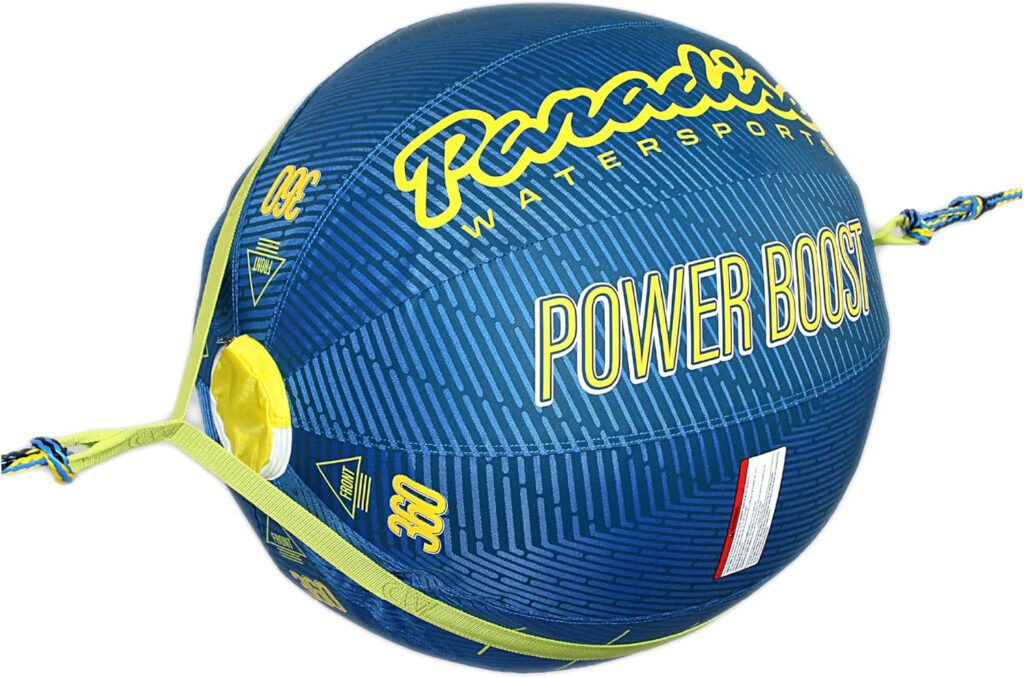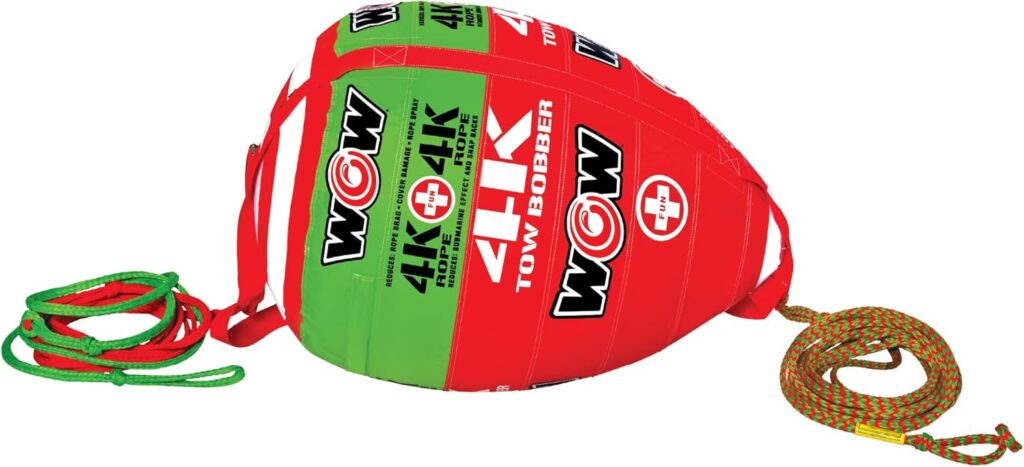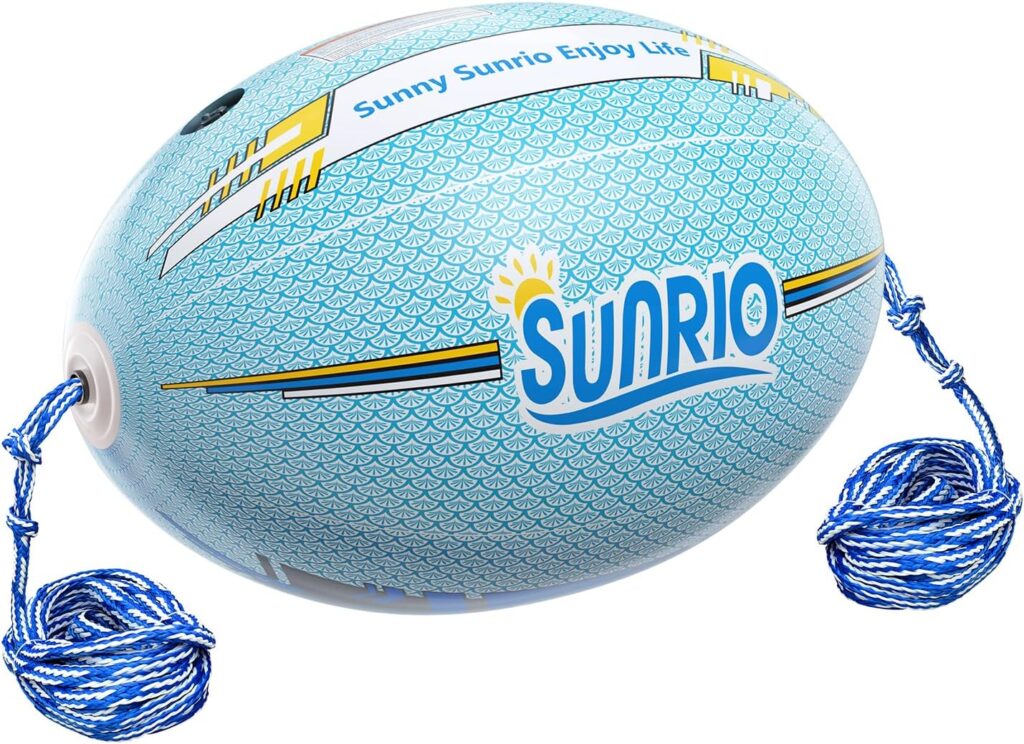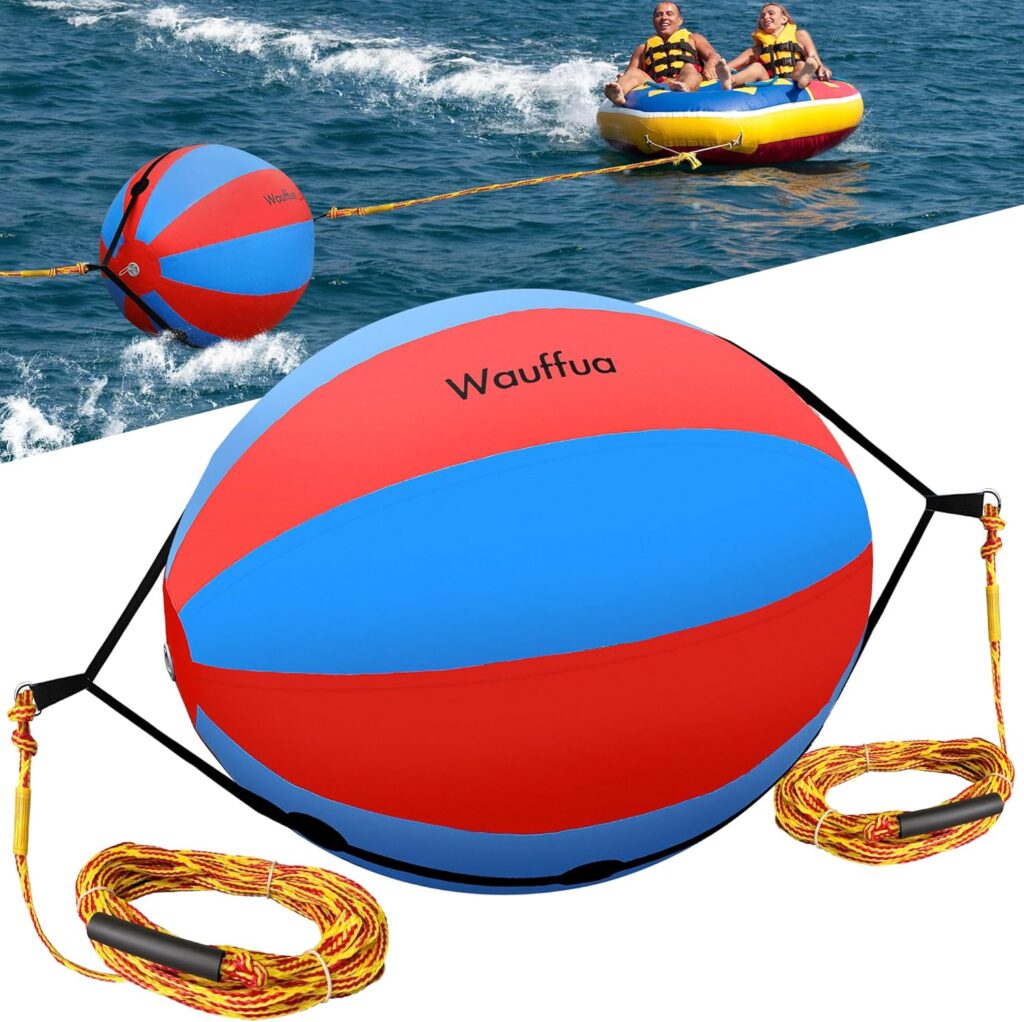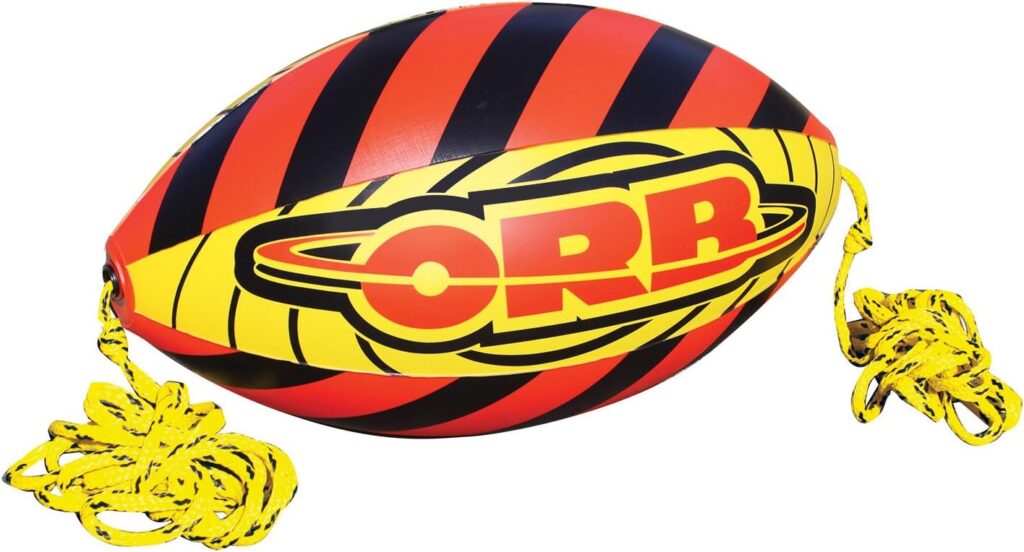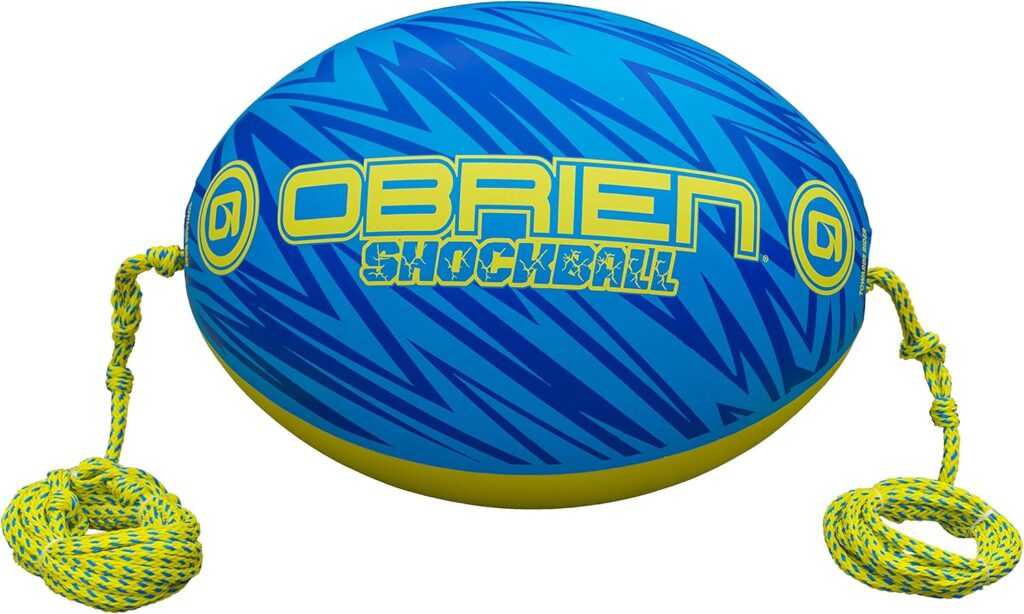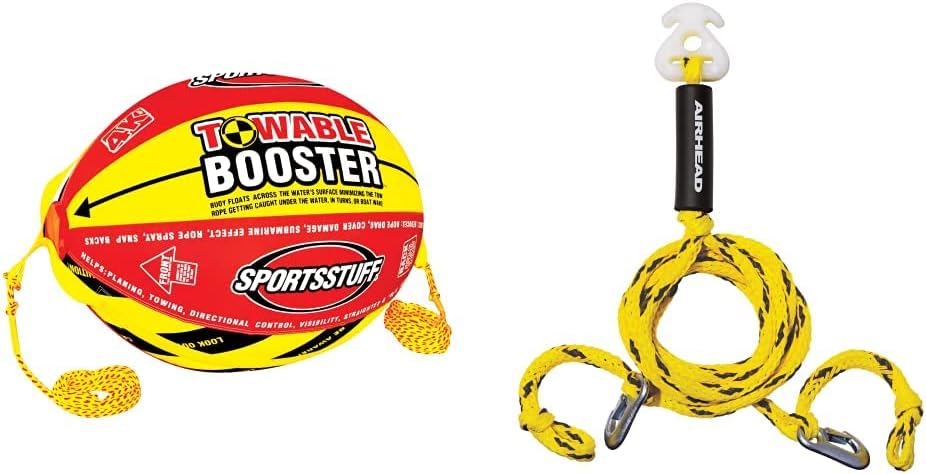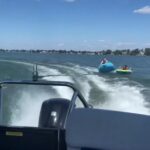9 best booster ball for Towables – The Secret to Smoother Rides
If you’ve ever watched a grown man airborne, holding onto a towable tube like a cat being vacuumed across a tile floor, you already know the value of finding the best booster ball for towables. Especially if that grown man was you. Or worse, your father-in-law.
You might think a booster ball is just another overpriced accessory. Something to keep the rope from dragging. But the consequences of skipping it? A face full of water spray, aggressive yanks on the rope, and a tube that submarines the moment your boat hits throttle.
This isn’t just about comfort. It’s about safety, fuel efficiency, and not hearing the words “I’m never doing that again” from your weekend guests.
What’s the Best Booster Ball for Towables
If your tow rope keeps dipping, creating a water rooster tail that soaks your riders, you need the best booster ball for towables.
Without a booster ball for towables, your rope can slacken and tighten erratically, whipping tubes in unpredictable directions. Your tube might even dive under the surface before bouncing up like a breaching whale.
A booster ball for tubing is not optional if you care about the ride. Here is the best booster ball for towables:
The Best Booster Ball for Towables
When you’re towing a tube and your rope keeps slapping the water, dragging through the wake, and soaking your riders before the fun even begins, it’s time to upgrade. A booster ball lifts your tow rope off the water’s surface, reducing drag, preventing nose-dives, and improving both ride comfort and rope longevity.
The best booster ball for towables transforms a jerky, spray-heavy tubing experience into a smooth, balanced pull that keeps riders happy and safe. Below are concise, unbiased expert reviews of the most popular models on the market, focused strictly on function, build quality, and on-water performance.
1. SportsStuff Booster Towable Tube Ball
Reliable and high-performing, this model is a go-to for large towables and rougher waters. It consistently keeps the rope elevated, cuts down on spray, and reduces rope jerk at high speeds. Construction is rugged and designed to last multiple seasons of use.
Pros
- Handles up to four riders with ease
- Excellent rope stability at 30–40 mph
- Durable 840D nylon cover resists punctures and sun damage
- High-quality air bladder holds pressure well
- Visible color scheme enhances safety
Cons
- Takes up more space than smaller models when deflated
- Slightly more expensive than mid-tier alternatives
2. NorEast Outdoors Power Boost Ball with Tow Rope
This unit delivers consistent lift and improves rope tension on calm to moderately choppy water. Best suited for small families or occasional weekend tubing. Materials are solid, though less heavy-duty than premium options.
Pros
- Affordable, especially for bundled rope and ball
- Lightweight and simple to inflate
- Improves ride stability for 1–2 rider tubes
- Reduces rope slap and mid-line spray
- Compact enough for pontoons and smaller boats
Cons
- Limited durability under aggressive use
- May not support 3+ person towables reliably
3. WOW Sports 4K Towable Rope with Bobber
This model combines a strong 4,100 lb tow rope with a buoyant bobber for mid-line lift. Rope tracking stays consistent, especially when pulling deck tubes at high speed. The build feels dependable without being overly bulky.
Pros
- Works well for both kids and adult riders
- Rope maintains solid tension and alignment
- Excellent for high-speed, single-tube runs
- Streamlined design reduces setup time
- Maintains position even in mild chop
Cons
- Less lift than larger booster balls
4. Sunrio Towable Tube Rope Performance Booster Ball
While it doesn’t have the brand recognition of others, this model functions effectively for casual tubing. It provides basic rope lift, particularly in flat water conditions. The setup is easy and straightforward for novice boaters.
Pros
- Quick inflation and deflation
- Lightweight for travel and storage
- Decent lift for one or two riders
- Affordable entry-level pricing
- Easy to attach to most ski or tow hooks
Cons
- Struggles with heavier tubes or high-speed pulls
5. Airhead Booster Ball
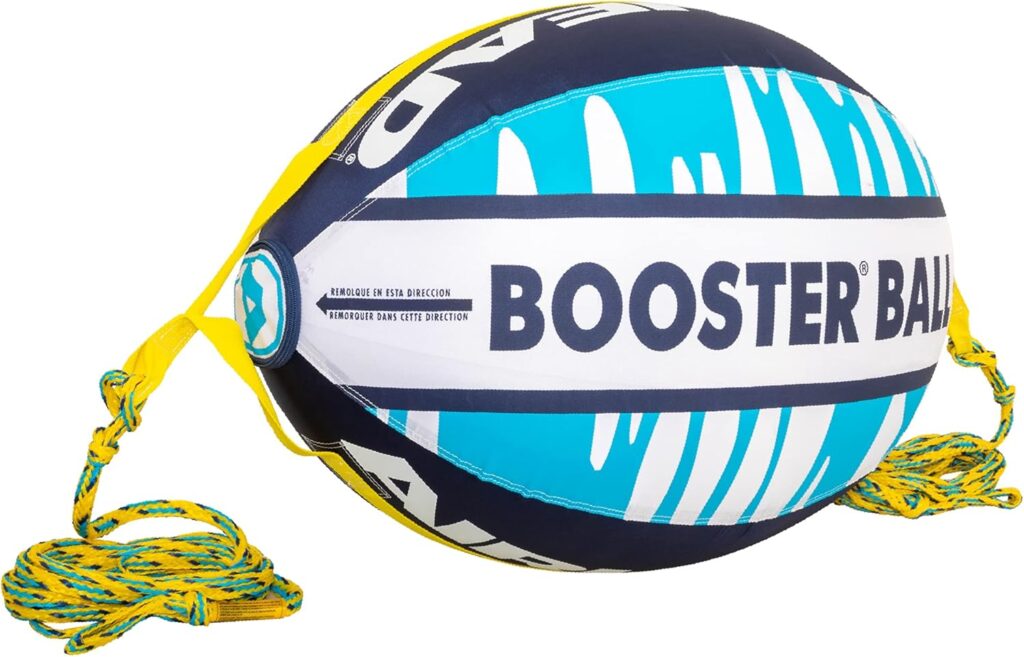
This well-regarded unit combines performance-grade rope with durable construction and excellent lift. It noticeably improves rope tension and reduces rider fatigue during sharp turns or acceleration. Ideal for families that tube frequently across different water conditions.
Pros
- Trusted build quality and reliable rope strength
- Compatible with many towable designs
- Holds up well to repeated sun and water exposure
- Ball shape minimizes line drag and water resistance
- Clear inflation valve makes setup quick
Cons
- Slightly pricier than similar-capacity models
- Valve positioning can be awkward when deflating
6. Wauffua Towable Tube Rope Booster Ball
This compact booster ball is tailored for light-duty tubing and younger riders. It provides moderate lift but may fall short under higher strain. Lightweight build makes it very portable and easy to store.
Pros
- Great choice for casual tubing sessions
- Ideal for smaller boats or lower horsepower setups
- Basic rope lift improves tracking for kids
- Straightforward setup for beginners
- Affordable for first-time buyers
Cons
- Lower tensile strength restricts use to 1–2 riders
- Not intended for fast or aggressive tubing conditions
7. Airhead ORB Buzz Double Towable Tube Ball
This dual-tow capable model is one of the few designed specifically for pulling two tubes at once. Rope lift remains balanced on both sides, and the unit performs reliably even under full load. The setup is more involved, but well worth it for families or groups.
Pros
- Built for heavy, dual-rider or multi-tube setups
- Reduces mid-line drag across both tow paths
- Holds shape and pressure during extended use
- Ideal for pontoon boats and V-hull models
- Adds safety and stability for group tubing
Cons
- Bulkier than standard single-tube balls
- Setup and positioning takes longer
8. O’Brien Shockball
Targeted at solo or dual riders, this compact booster ball emphasizes control and reduced tension fatigue. It’s especially helpful for tighter turns and wakeboarding scenarios. The shock-absorbing core offers a unique benefit compared to traditional boosters.
Pros
- Smooths transitions and jerks during speed changes
- Great for precision turns or wakeboarding setups
- Compact and space-saving in design
- Durable cover handles bumps and UV exposure
- Quick to install and inflate
Cons
- Not built for heavy or double-tube pulls
- Limited lift compared to larger, spherical models
9. SportsStuff Booster Ball with Airhead Heavy Duty Tow Harness
Combining two heavy-duty components, this kit is ideal for boats with low tow points like pontoons. The harness distributes stress evenly, while the booster ball keeps the rope above the wake. It’s a complete setup for improving safety and ride quality.
Pros
- Perfect for boats lacking elevated tow bars
- Harness prevents tube sway or drag imbalance
- Ball offers substantial rope lift and dampening
- Reinforced stitching handles 3–4 rider tubes
- Excellent long-term durability
Cons
- Takes more space when both components are stored
- Setup time is longer than single-unit options
Understanding What a Booster Ball Does
A tubing booster ball is an inflatable sphere that connects mid-line on your tow rope. Its job is to:
- Lift the rope out of the water, reducing drag and slack.
- Prevent “submarining,” which happens when the front of the tube dips under and throws riders.
- Minimize spray from the rope slapping the water.
- Create a smoother arc between the boat and the tube.
It sounds simple, but these changes dramatically improve how the tube behaves at all speeds. Your riders get a stable, balanced ride. Your rope lasts longer. Your boat doesn’t work as hard. And you might even gain 1 to 2 MPH in efficiency.
Picking the Right Size and Capacity
Booster balls vary by capacity:
- Standard booster balls: Ideal for 1–3 rider towables
- Heavy-duty models: Needed for 4+ rider tubes or multi-tube setups
Check the weight limits and rope strength. Most towable booster balls come with a reinforced 60-foot tow rope, but the rope rating must match or exceed your tube’s weight capacity. Look for a minimum of 4,000–6,000 lbs tensile strength.
Choosing a Model with Reliable Construction
The best booster ball for towables won’t be the cheapest. You’re looking for:
- 840D nylon cover for durability
- Heavy-gauge PVC bladder
- Double-stitched seams
- Reinforced air valve that won’t leak mid-ride
- Stainless steel swivel hooks for twist-free towing
The Sportsstuff “Big Air” Booster Ball, for example, checks every box. It’s built for harsh wake conditions and easily supports heavy tubes.
Confirming Compatibility with Your Tube and Boat Setup
- If you’re using a pontoon, make sure your booster ball includes a Y-harness or is compatible with a transom-mounted tow hook.
- For jet boats or outboards, ensure there’s enough clearance behind the motor.
- Always use a boat mirror for spotting riders, and make sure your rope attaches securely. If you’re unsure, look into how to attach tube tow rope to boat guides before launching.
Installation and Inflation
- Inflate the ball to the manufacturer’s PSI rating; over- or under-inflation ruins performance
- Attach the rope ends to the boat and tube as instructed
- Place the tube rope ball 30–40 feet from the transom, centered in the line
That’s it. Now your booster ball is in a position to do its job.
Why People Regret Skipping a Booster Ball
Most people skip it because they think a rope is a rope. Then they ride without it. The rope slaps, the tube noses down, someone falls off, and suddenly the day’s done.
Worse still, families with kids and beginners have a rough first experience and don’t return to the water. For any ride over 15 MPH or with tubes seating 2+ riders, a towable booster ball isn’t an upgrade. It’s required.
FAQs on The Best Booster Ball for Towables
Do I really need a booster ball?
Yes, if you’re pulling more than one rider, going above 15 MPH, or using a longer rope. Without it, your tube won’t perform as designed.
Can I use it with a pontoon boat?
Absolutely. Just make sure the booster ball has a compatible harness. Many ask, can you pull a tube with a pontoon boat? you can, but setup matters.
Does it replace the rope or attach to it?
Most tube for boat kits include a booster ball with a dedicated rope. It becomes part of your tow line.
Can I use it to pull two tubes?
Only if your model is rated for dual tow. Otherwise, research how to pull two tubes behind a boat and use a dedicated Y-harness setup.
Maintenance: Keep Your Booster Ball Working All Season
- Rinse with fresh water after each use to remove salt and grime
- Store inflated to preserve bladder shape, but out of direct sunlight
- Use a tarp or bag to prevent UV degradation
This may seem like overkill, but many booster balls fail because they’re crumpled wet in a garage corner for six months.
When Not to Use a Booster Ball
- If you’re only pulling solo riders at low speeds
- If your tube and rope setup already lifts well behind your hull
- If you’re using a bungee-style rope for slack absorption
But even then, the ride won’t be as stable or spray-free.
The Bottom Line on The Best Booster Ball for Towables
Choosing the best booster ball for towables isn’t just about brand or price. It’s about understanding the physics of water drag and tube behavior. Booster balls make tubing faster, safer, and far more fun.
Ask anyone who’s gone without one and you’ll hear the same story: “We thought we didn’t need it until we got one.”
It’s a small detail that makes a massive difference.

